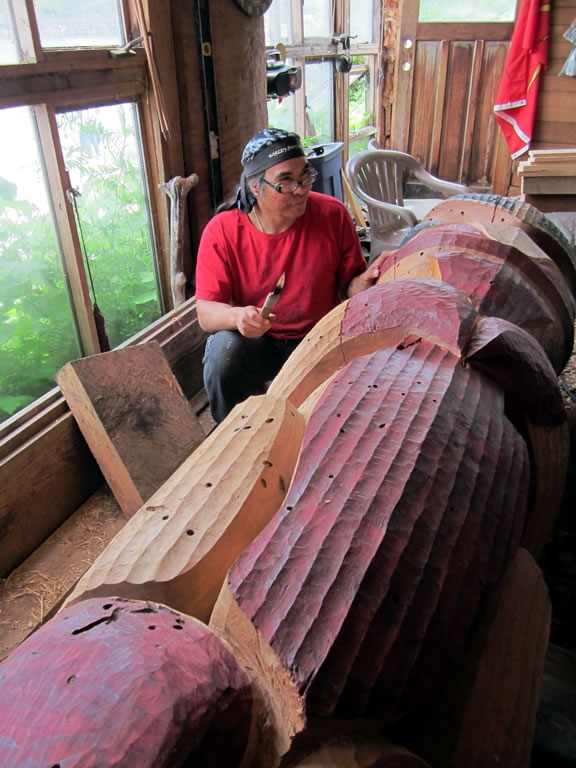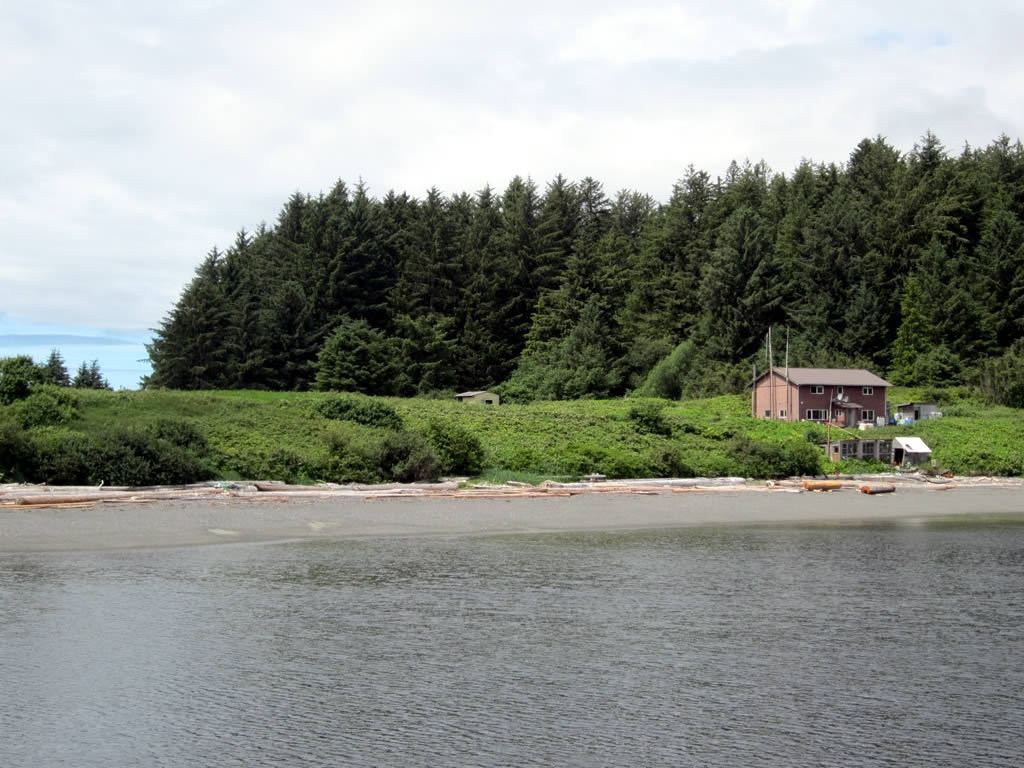Browse "Diverse Communities"
-
Article
Midewiwin
Midewiwin, or Grand Medicine Society, is a spiritual society found historically among the Algonquian of the Upper Great Lakes (Anishinaabe), northern prairies and eastern subarctic. Once widespread, the Midewiwin became less prevalent after the arrival of Europeans in the 18th and 19th centuries. Today, the largest Midewiwin societies are found in parts of Ontario, Manitoba, Wisconsin and Minnesota.
"https://d2ttikhf7xbzbs.cloudfront.net/midewiwin.jpg" // resources/views/front/categories/view.blade.php
https://d2ttikhf7xbzbs.cloudfront.net/midewiwin.jpg
-
Article
'Mimkwamlis Potlatch (Memkumlis Raid)
On 25 December 1921, a Potlatch ceremony was held in the Kwakwa̱ka̱’wakw village of ‘Mimkwamlis (also spelled Memkumlis, and also known as Village Island). The Potlatch ceremony was illegal at the time. Officers of the federal government’s Department of Indian Affairs (see Federal Departments of Indigenous and Northern Affairs), as well as the Royal Canadian Mounted Police and, according to some sources, the British Columbia provincial police learned of this Potlatch. They arrested 45 people for participating in the Potlatch. Approximately half of the people were sent to prison for periods ranging from two to three months. Hundreds of precious Kwakwa̱ka̱’wakw ceremonial objects were confiscated. Some of these items were sold to collectors and wound up in museums without the consent of the Kwakwa̱ka̱’wakw people. The arrests related to the ‘Mimkwamlis Potlatch of 1921 were an example of police and government abuse of Indigenous Peoples. It is a further example of the attempted cultural genocide of Indigenous Peoples in Canada (see Genocide and Indigenous Peoples in Canada).
"https://d2ttikhf7xbzbs.cloudfront.net/MimkwamlisPotlatch/umista_cultural_centre_web.jpg" // resources/views/front/categories/view.blade.php
https://d2ttikhf7xbzbs.cloudfront.net/MimkwamlisPotlatch/umista_cultural_centre_web.jpg
-
Article
Mishipeshu
The most important underwater being for the Ojibwa is Mishipeshu, which means "the Great Lynx." This fantastic dragon-like animal resembles a feline with horns, symbols of his power.
"https://development.thecanadianencyclopedia.ca/images/tce_placeholder.jpg?v=e9dca980c9bdb3aa11e832e7ea94f5d9" // resources/views/front/categories/view.blade.php
https://development.thecanadianencyclopedia.ca/images/tce_placeholder.jpg?v=e9dca980c9bdb3aa11e832e7ea94f5d9
-
"https://development.thecanadianencyclopedia.ca/images/tce_placeholder.jpg?v=e9dca980c9bdb3aa11e832e7ea94f5d9" // resources/views/front/categories/view.blade.php
https://development.thecanadianencyclopedia.ca/images/tce_placeholder.jpg?v=e9dca980c9bdb3aa11e832e7ea94f5d9
-
Article
Mowachaht-Muchalaht
The Mowachaht and Muchalaht are Nuu-chah-nulth First Nations which formally amalgamated in the 1950s. Together, their territory includes parts of the west coast of Vancouver Island. As of September 2018, the federal government reports the registered population to be 613. Along with other Nuu-chah-nulth Tribal Council nations, the Mowachaht-Muchalaht are currently in stage four of a six-stage treaty process in British Columbia to attain self-government.
"https://d2ttikhf7xbzbs.cloudfront.net/media/media/7d6132f3-b886-4d9f-bd87-04918c8b3cd6.jpg" // resources/views/front/categories/view.blade.php
https://d2ttikhf7xbzbs.cloudfront.net/media/media/7d6132f3-b886-4d9f-bd87-04918c8b3cd6.jpg
-
"https://d2ttikhf7xbzbs.cloudfront.net/media/media/d5326e90-438b-46e2-800a-1bebc32ec1fe.jpg" // resources/views/front/categories/view.blade.php
https://d2ttikhf7xbzbs.cloudfront.net/media/media/d5326e90-438b-46e2-800a-1bebc32ec1fe.jpg
-
Article
Music at The Stratford Festival
The Stratford Festival (named the Stratford Shakespearean Festival, 1953–57; Stratford Festival, 1957–99; Stratford Festival of Canada, 2000–08; Stratford Shakespeare Festival, 2008–12) is an annual repertory theatre festival.
"https://d2ttikhf7xbzbs.cloudfront.net/media/media/7a68957a-5d7c-4d18-8a4b-9aac395d8a53.jpg" // resources/views/front/categories/view.blade.php
https://d2ttikhf7xbzbs.cloudfront.net/media/media/7a68957a-5d7c-4d18-8a4b-9aac395d8a53.jpg
-
Article
Musique populaire francophone
This article is currently being translated. It will be available shortly. Please check back at a later date or add it to your saved articles.
"https://development.thecanadianencyclopedia.ca/images/tce_placeholder.jpg?v=e9dca980c9bdb3aa11e832e7ea94f5d9" // resources/views/front/categories/view.blade.php
https://development.thecanadianencyclopedia.ca/images/tce_placeholder.jpg?v=e9dca980c9bdb3aa11e832e7ea94f5d9
-
Article
Names
Personal names carry history, traditions, identity, spiritual meaning and hopes. The history of Canada includes both developments and controversy in naming. Naming has been an issue for many aboriginal communities. The use of European-origin names instead of traditional names is one example.
"https://development.thecanadianencyclopedia.ca/images/tce_placeholder.jpg?v=e9dca980c9bdb3aa11e832e7ea94f5d9" // resources/views/front/categories/view.blade.php
https://development.thecanadianencyclopedia.ca/images/tce_placeholder.jpg?v=e9dca980c9bdb3aa11e832e7ea94f5d9
-
Article
Native Women’s Association of Canada
Founded in 1974, the Native Women’s Association of Canada (NWAC) is an organization that supports the socio-economic, political and cultural well-being of Indigenous women in Canada. Dedicated to the principles of humanitarianism, NWAC challenges the inequalities and discrimination that Indigenous women face by remaining politically engaged in causes such as education, housing, child welfare and more.
"https://d2ttikhf7xbzbs.cloudfront.net/media/media/936c2b99-17d5-42ab-84f2-a309bc3022c9.jpg" // resources/views/front/categories/view.blade.php
https://d2ttikhf7xbzbs.cloudfront.net/media/media/936c2b99-17d5-42ab-84f2-a309bc3022c9.jpg
-
Article
Order-in-Council P.C. 1911-1324 — the Proposed Ban on Black Immigration to Canada
Order-in-Council P.C. 1324 was approved on 12 August 1911 by the Cabinet of Prime Minister Sir Wilfrid Laurier. The purpose of the order was to ban Black persons from entering Canada for a period of one year because, it read, “the Negro race…is deemed unsuitable to the climate and requirements of Canada.” The order-in-council was the culmination of what researcher R. Bruce Shepard has called Canada’s “campaign of diplomatic racism.” Though the order never became law, the actions of government officials made it clear that Black immigrants were not wanted in Canada (see Immigration).
"https://d2ttikhf7xbzbs.cloudfront.net/media/media/9d43e9db-d903-4447-a4a6-ad497d99685f.jpg" // resources/views/front/categories/view.blade.php
https://d2ttikhf7xbzbs.cloudfront.net/media/media/9d43e9db-d903-4447-a4a6-ad497d99685f.jpg
-
Article
Pacheenaht
The "Pacheedaht" or "Pacheenaht" ("sea-foam-on-rocks people") take their name from the former village site of "p'aachiida" (pronounced "pah-chee-da") at the head of Port San Juan Bay on southwest Vancouver Island.
"https://development.thecanadianencyclopedia.ca/images/tce_placeholder.jpg?v=e9dca980c9bdb3aa11e832e7ea94f5d9" // resources/views/front/categories/view.blade.php
https://development.thecanadianencyclopedia.ca/images/tce_placeholder.jpg?v=e9dca980c9bdb3aa11e832e7ea94f5d9
-
Article
Filipino Music in Canada
In the 1986 Census of Canada, 107,000 listed Filipino as their single or multiple ethnic origin. Of these, 27,000 were born in Canada and 80,000 had immigrated: 31,000 in the period 1978-86, 45,000 in the period 1967-77, and the rest before 1967.
"https://development.thecanadianencyclopedia.ca/images/tce_placeholder.jpg?v=e9dca980c9bdb3aa11e832e7ea94f5d9" // resources/views/front/categories/view.blade.php
https://development.thecanadianencyclopedia.ca/images/tce_placeholder.jpg?v=e9dca980c9bdb3aa11e832e7ea94f5d9
-
Article
Traditional Plants and Indigenous Peoples in Canada
Indigenous peoples in what is now Canada collectively used over a 1,000 different plants for food, medicine, materials, and in cultural rituals and mythology. Many of these species, ranging from algae to conifers and flowering plants, remain important to Indigenous communities today. This knowledge of plants and their uses has allowed Indigenous peoples to thrive in Canada’s diverse environments. Many traditional uses of plants have evolved to be used in modern life by Indigenous and non-Indigenous peoples alike. (See also Indigenous Peoples’ Medicine in Canada.)
"https://d2ttikhf7xbzbs.cloudfront.net/media/new_article_images/WildBerries/9342749963_6006fba520_z.jpg" // resources/views/front/categories/view.blade.php
https://d2ttikhf7xbzbs.cloudfront.net/media/new_article_images/WildBerries/9342749963_6006fba520_z.jpg
-
Article
Polish Music in Canada
The first Polish settlement in Canada was established by Kashubian peasants in the early 1860s in Renfrew County, south of Pembroke, Ont. In 1875 a Polish parish was organized and a church built at the place which became the village of Wilno in the 1880s.
"https://development.thecanadianencyclopedia.ca/images/tce_placeholder.jpg?v=e9dca980c9bdb3aa11e832e7ea94f5d9" // resources/views/front/categories/view.blade.php
https://development.thecanadianencyclopedia.ca/images/tce_placeholder.jpg?v=e9dca980c9bdb3aa11e832e7ea94f5d9
